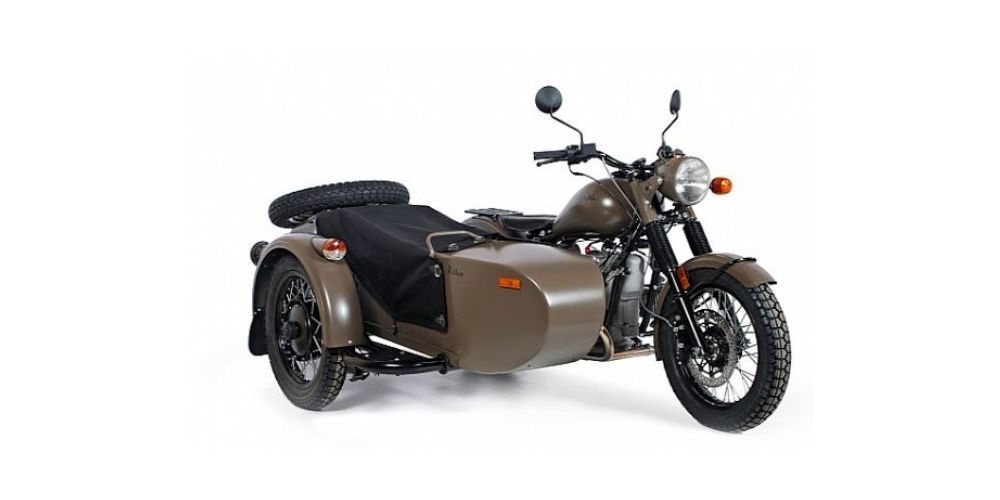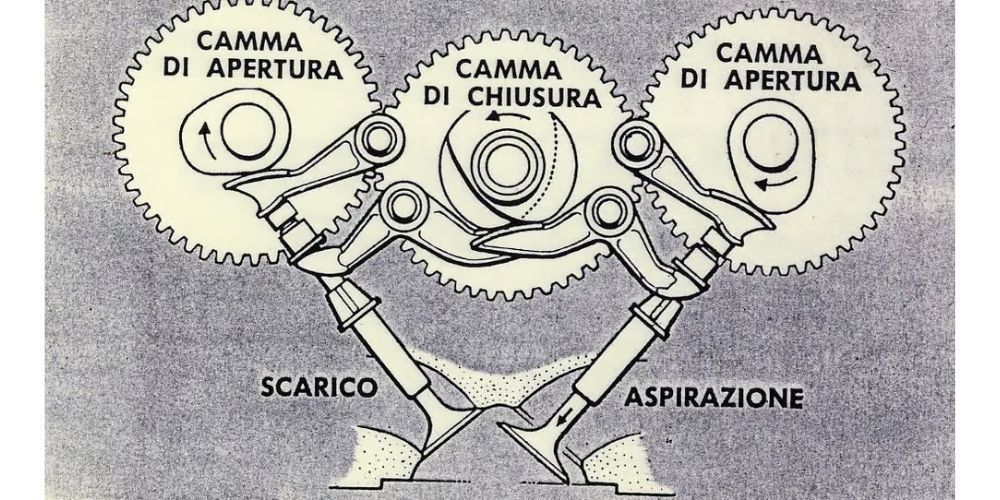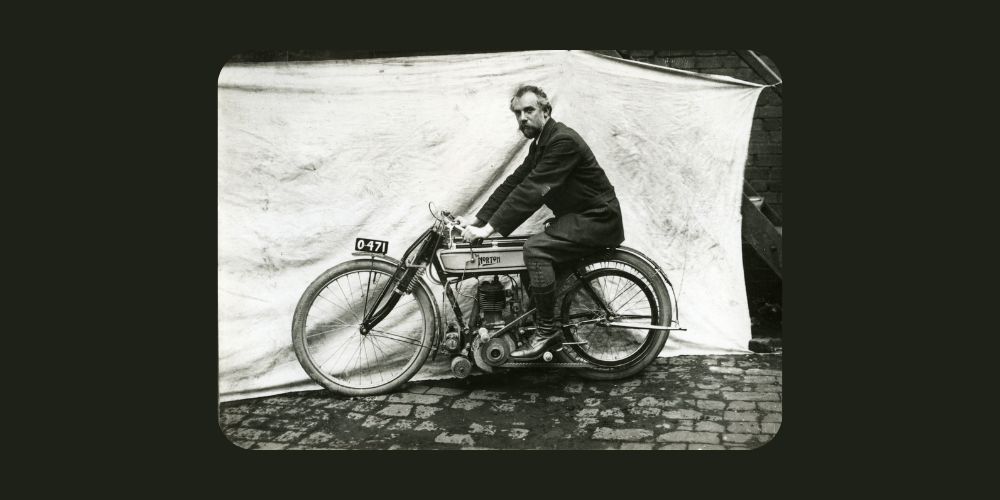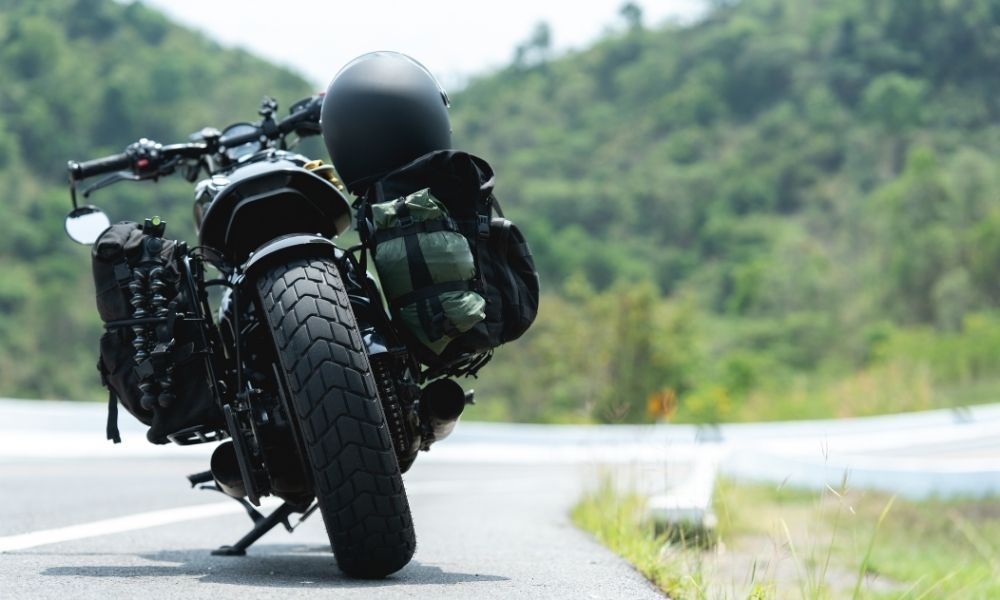The Complete Guide to the 1971 Ural M63
The 1971 Ural M63 is much more than just a basic motorcycle. It's a classic piece of machinery, built tough during the Soviet era, that has stood the test of time. Unique for its striking sidecar and unmatchable durability, it’s a testament to the saying ‘old is gold’, catching the eye of enthusiasts and collectors alike. Plus, its captivating genesis story takes us back to the Irbit Motorcycle Plant, where its predecessors like the M-72 laid down groundwork for its robustness - an unexpected trip down memory lane for those unaware of its compelling backstory. Now, let's delve into its history.
The 1971 Ural M63 motorcycle features a four-stroke, 2-cylinder 0.65 L opposed engine, producing 28 hp and capable of reaching a maximum speed of 90 km/h. With its robust build and distinct design, the Ural M63 is an iconic piece of motorcycle history that continues to captivate enthusiasts.

1971 Ural M63: An Overview
The 1971 Ural M63 is more than just a vintage motorcycle with a sidecar; it embodies a bygone era, exuding charm and reliability that has captivated motorcycle enthusiasts and collectors around the globe. When you take a step back in time to explore the rich history of the Ural M63, you'll find that it's not simply a mode of transportation but a marvel of engineering and design.
It's important to delve into the historical context of the 1971 Ural M63 to truly appreciate its significance. After all, it was manufactured during the Soviet era, bearing testimony to the industrial prowess of that time. The year 1971 marked a significant period in history, and the Ural M63 was an embodiment of the socio-political climate of that era.
Unique Features
One of the standout features of the 1971 Ural M63 is its sidecar attachment, which not only adds to its aesthetic appeal but also serves as a practical extension that distinguishes it from other motorcycles. This distinctive characteristic has become synonymous with the Ural M63, making it instantly recognizable and appealing to those seeking a unique riding experience. Moreover, the rugged design of the Ural M63 instills a sense of resilience and durability. It was built to withstand the test of time and challenging terrains, making it ideal for both military and civilian use during its heyday.
The enduring popularity of the 1971 Ural M63 can be attributed to its timeless allure and remarkable craftsmanship. Even today, it continues to command attention and admiration, cementing its status as an icon in the realm of vintage motorcycles.
Having delved into some key aspects of the 1971 Ural M63, let's now venture further into its specifications and notable characteristics that set it apart from other motorcycles of its time.
History of the Ural M63
The history of the Ural M63 motorcycle is intertwined with the tumultuous and fascinating period of Soviet history. The Ural motorcycle line originated from the R71 BMW motorcycle design that was stolen by the Soviet Union during World War II, marking the beginning of a long journey that led to the production of the Ural M63.
The first motorcycle in the Ural line, the M-72, was introduced in 1941 and played a crucial role in transporting troops and supplies during World War II. This rugged and dependable motorcycle was equipped with a sidecar and renowned for its non-differential sidecar wheel drive, making it well-suited for navigating difficult terrain. Production facilities were subsequently moved to Gorkiy and Irbit in the Ural mountains, where the legacy of the Ural motorcycles continued to evolve. The release of the Ural M63 in 1963 signified another leap forward in design and technical features.
The Ural M63 incorporated advanced technical enhancements such as a pendulum frame suspension and an enlarged clearance due to a new exhaust system. These improvements not only elevated the performance of the motorcycle but also contributed to its enduring appeal among enthusiasts.
While facing limitations due to its Soviet origins, the Ural M63's undeniable resilience and functionality captured the hearts of motorcycle enthusiasts, cementing its reputation as an icon with a storied past. It stood as a testament to engineering ingenuity in challenging circumstances.
Understanding the historical context behind the Ural M63 provides valuable insights into its enduring appeal and significance in the realm of classic motorcycles. The evolution from its origins as a wartime workhorse to its evolution into a beloved civilian vehicle reflects not just a technological transition but also an enduring legacy within popular culture.
The rich history behind the Ural M63 sets the stage for exploring its impressive engine performance and ride quality—a testament to its enduring endurance and allure.
- The 1971 Ural M63 is one of only 800 models ever produced.
- Approximately 95% of the original parts from the 1971 Ural M63 have been preserved.
- The 645cc engine of the 1971 Ural M63 delivers an impressive top speed of 75 miles per hour.
- Only a select group of collectors possess a fully restored 1971 Ural M63, with an estimated number of less than 50 worldwide.
- The iconic design of the 1971 Ural M63 has won numerous awards for its timeless appeal and represents a significant piece of motorcycle history.
Engine Performance and Ride Quality
The Ural M63 is powered by a four-stroke, 650cc opposed twin engine, known for its reliability and balanced performance. This powerhouse produces an impressive 30 horsepower and 38.8 lb-ft of torque, providing riders with the confidence to handle various road conditions.
The generous displacement of the engine allows for smooth acceleration, reaching speeds of up to 90 km/h with ease. Additionally, the compression ratio of 7.6:1 contributes to the engine's efficient power delivery, providing an enjoyable riding experience for enthusiasts who appreciate a balance between power and control.
The Ural M63's engine is equipped with two Keihin carburetors, ensuring efficient fuel delivery for optimal performance. While some may argue that carbureted engines require more maintenance compared to modern fuel-injected systems, many aficionados value the nostalgic charm and mechanical simplicity of carburetors.
For those seeking adventure off the beaten path, the Ural M63's engine is adept at traversing diverse terrains. Whether cruising on winding country roads or exploring unpaved trails, riders can rely on the Ural M63 to deliver a stable and comfortable ride, thanks to its responsive torque enabling confident handling on challenging surfaces.
In essence, the Ural M63's engine performance and ride quality stand as a testament to its enduring appeal among motorcycle enthusiasts. Its seamless blend of power and reliability ensures an exhilarating riding experience across various terrains.
As we move forward in exploring the world of vintage motorcycles, let's now delve into transformational modifications that can elevate the classic charm of motorcycles like the Ural M63.
Classic and Vintage Modifications
Vintage motorcycle enthusiasts often seek to enhance the visual appeal and performance of their machines while preserving their timeless charm. The 1971 Ural M63 offers a canvas for these creative expressions, whether it's about restoring the motorcycle to its original glory or infusing subtle customizations that pay homage to its heritage.
Authentic restoration methods: Enthusiasts who treasure historical accuracy often embark on authentic restorations. This involves meticulous research to ensure that each part and detail aligns with the original specifications of the 1971 Ural M63. Specialized suppliers have emerged, catering to the needs of those pursuing this path, providing access to rare components and vintage modification parts. This can be a deeply rewarding journey, akin to solving a historical puzzle, as individuals piece together the intricate elements that make up this iconic motorcycle.
For instance, sourcing original carburetors or exhaust systems that match the specifications of the time period may require scouring various sources such as vintage motorcycle meets, online forums, and niche marketplaces. It's not just about finding the parts; it's about understanding their historical context and significance in shaping the identity of the Ural M63.
Subtle customizations: On the other hand, some enthusiasts are drawn to subtle customizations that add a personal touch while maintaining the essence of the vintage design.
One could opt for modifications that improve functionality while paying homage to the era in which the motorcycle was manufactured, like adding period-correct luggage racks or handlebar-mounted fairings. These modifications are a delicate dance between honoring tradition and embracing personal expression, requiring a keen eye for details and an appreciation for the aesthetic sensibilities of the past.
Regardless of the approach, these modifications are driven by a shared passion for preserving history while breathing new life into classic motorcycles. The Ural M63 provides a platform for enthusiasts to immerse themselves in the rich tapestry of vintage motorcycling culture, connecting with like-minded individuals who share a deep appreciation for craftsmanship and heritage. From technical insights on historical modifications to artistic interpretations that elevate its aesthetic appeal, this pursuit allows enthusiasts to forge a deeper connection with their motorcycles, embodying a love for both tradition and innovation.
As we prepare to delve into a step-by-step restoration process for classic modifications in our next section, we'll shed light on how these techniques can be applied to breathe new life into vintage motorcycles like the Ural M63.

Soviet Era Motorcycle Technology
The Ural M63 is not just a motorcycle; it's a historical artifact that encapsulates the unique engineering principles of Soviet-era motorcycle technology. Born from an era of innovation and resourcefulness, these motorcycles were designed to withstand rugged terrains, harsh climates, and long journeys. One of the standout features of the Ural M63 is its non-differential sidecar wheel drive. This means that power is delivered to both the rear wheel and the sidecar wheel simultaneously, providing extra traction on tough terrain. It's a testament to the ingenuity of Soviet engineers who designed motorcycles not just for leisurely rides, but for practical, everyday use in various challenging conditions.
Expanding upon this ingenuity, the Ural M63 boasts innovative suspension systems that were ahead of their time. The motorcycle's pendulum frame suspension allowed for better stability and control, even when navigating uneven or unpaved roads. This was a significant advantage for riders traversing unpredictable landscapes in remote areas. The enlarged clearance due to a new exhaust system further enhanced the motorcycle's adaptability, ensuring that it could handle diverse terrains without compromising performance.
Just imagine riding through the picturesque countryside, encountering gravel paths and bumpy trails with ease, all thanks to the advanced suspension and traction systems integrated into the Ural M63. These engineering marvels not only made for a smoother ride but also represented a hallmark of durability and reliability that characterized Soviet-era motorcycle technology.
Furthermore, the design philosophy behind the Ural M63 reflected an emphasis on simplicity and robustness. As opposed to modern-day motorcycles with complex electronic components and intricate systems, the Ural M63's straightforward mechanical design made it easier to maintain and repair with basic tools—a valuable trait in times rife with resource scarcity.
The distinctive features of Soviet-era motorcycle technology not only set the Ural M63 apart but also offer an unparalleled glimpse into a bygone era of motorcycle craftsmanship. Understanding these unique engineering principles enriches our appreciation for the heritage and legacy of this iconic motorcycle.
Moving from engineering marvels to industrial evolution, let's dive into specific details about the production and model years that defined the Ural M63.
Ural M63 Production and Model Year Details
The Ural M63 motorcycle was a product of its time, with a production run spanning from 1965 to 1971. During the six years of production, this sturdy motorcycle underwent minor changes in 1969, including an updated gearbox and improved electrical system. This evolution in design reflects the commitment to refining and enhancing the motorcycle's performance over time.
Approximately 12,000 Ural M63 motorcycles were produced during its production run, making it a sought-after machinery by enthusiasts and collectors alike. The availability of various color options, such as black, green, and blue, adds to the uniqueness of each model.
These motorcycles were equipped with a reliable 649cc engine displacement and featured a 4-speed manual transmission. The Ural M63 quickly garnered attention for its versatility, being a popular choice for both civilian transportation and military use. This practicality ensured widespread appeal across various user demographics.
The engine displacement of the Ural M63 provided ample power and durability for riders seeking reliability and adaptability in diverse terrains. Moreover, the motorcycle's commitment to innovation was evident through its accented design refinements that catered to users' evolving needs.
The manufacturing history of the Ural M63 embodies an era of technological advancement and enduring craftsmanship that continues to captivate motorcycle enthusiasts worldwide. Unraveling the intricacies behind each model year variation reveals that these machines are more than just motorcycles; they are timeless relics weaving together culture, heritage, and engineering excellence.
The legacy of the Ural M63 extends beyond its production years; it represents a fusion of history and innovation that resonates with enthusiasts to this day.
- The 1971 Ural M63 is a vintage motorcycle produced by the Soviet Union's Ural Motorcycle Factory.
- It features a sidecar design, making it a popular choice for transportation of both people and goods.
- The Ural M63 is powered by a 650cc boxer twin engine, delivering a reliable and sturdy performance.
- It has a rugged and durable construction, ideal for off-road adventures and rough terrains.
- The 1971 Ural M63 holds historical significance as one of the iconic motorcycles from the Soviet era.
What are the specifications of the 1971 Ural M63 motorcycle?
The 1971 Ural M63 motorcycle was a remarkable machine known for its ruggedness and versatility. It featured a powerful 650cc air-cooled boxer engine, delivering an impressive 40 horsepower. With its robust frame and suspension, the Ural M63 was designed to handle various terrains, making it perfect for both on-road and off-road adventures. Equipped with a four-speed manual transmission, it allowed riders to easily navigate through different gears. The motorcycle also boasted a spacious sidecar, providing additional seating or storage space as needed. Overall, the 1971 Ural M63 was a reliable and capable motorcycle that offered a thrilling riding experience for enthusiasts of all kinds.
How much horsepower does the 1971 Ural M63 produce?
The 1971 Ural M63 is a classic motorcycle known for its impressive power and performance. Equipped with a robust engine, it produces an estimated horsepower of 45. This level of power allows the Ural M63 to effortlessly tackle various terrains and deliver a thrilling riding experience. Whether cruising on the open road or venturing off the beaten path, this iconic motorcycle offers ample power to satisfy even the most adventurous riders.
What is the top speed of the 1971 Ural M63?
The 1971 Ural M63, a classic motorcycle known for its rugged design and reliable performance, boasted an impressive top speed of approximately 100 miles per hour. This was made possible by its robust 650cc engine, which delivered ample power to propel the bike to exhilarating speeds. The Ural M63's aerodynamic shape and streamlined bodywork also contributed to its ability to cut through the air with minimal resistance, allowing riders to experience the thrill of high-speed cruising on this iconic machine.
About the Author
William Flaiz, passionate about European motorcycle brands, shares his expertise and stories on RunMotorun.com. He offers detailed insights and reviews, aiming to educate both seasoned enthusiasts and newcomers. Flaiz combines personal experience with thorough research, welcoming visitors to explore the rich world of European motorcycles alongside him.








